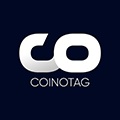Analyzing Cardano’s (ADA/USD) Price Surge: Key Highlights from July 6, 2023 Crypto Market Update
1
0

Introduction
This report provides a technical analysis of Cardano (ADA) for 6 July 2023. The analysis includes an overview of the price and volume and a detailed examination of the daily and monthly technical indicators and moving averages.
This report aims to provide traders and investors with insights into ADA’s short-term and long-term market trends. This can help them decide whether to buy, sell, or hold this cryptocurrency.
Please note that technical analysis does not guarantee future performance and should be used in conjunction with other research and investment strategies.
Price/Volume Overview
As of 5:31 p.m. UTC on 6 July 2023, on Binance, the price of Cardano (ADA) is $0.2821, a decrease of $0.0024 (-0.84%) from the previous close. The volume of ADA traded in the last 24 hours is 127,452,840 ADA. The day’s range is $0.2761 – $0.2937.
Source: TradingView
Timeframes
In technical analysis, the choice of timeframe plays a significant role. The timeframe refers to the period that the analysis considers. In this report, we use two timeframes: daily and monthly.
- Daily: The daily timeframe uses the price data of each day. Each point on a chart represents the price data of a single day. This timeframe is shorter and thus more suited for traders who aim to profit from short-term price fluctuations in the market.
- Monthly: The monthly timeframe uses the price data of each month. Each point on a chart represents the price data of a single month. This timeframe is longer and thus more suited for investors who aim to profit from long-term price trends in the market.
Technical Indicators
Technical indicators are mathematical calculations based on a cryptocurrency’s price and volume. They help to predict future price levels and market direction, and can generate buy and sell signals. The daily technical indicators provide insights into the short-term market trends, while the monthly technical indicators give a broader view of the long-term market trends.
Here are the definitions of the technical indicators used in this report:
- RSI (14): The Relative Strength Index measures the speed and change of price movements on a scale of 0 to 100. Traditionally, the market is considered overbought when above 70 and oversold when below 30.
- STOCH (9,6): The Stochastic Oscillator compares a cryptocurrency’s closing price to its price range over a certain period of time. The market is considered overbought when above 80 and oversold when below 20.
- STOCHRSI (14): The Stochastic RSI is a combination of the Stochastic Oscillator and the Relative Strength Index. It’s considered overbought when above 80 and oversold when below 20.
- MACD (12,26): The Moving Average Convergence Divergence is a trend-following momentum indicator that shows the relationship between two moving averages of a cryptocurrency’s price.
- ADX (14): The Average Directional Index measures the strength of a trend. A value above 25 indicates a strong trend.
- Williams %R: This momentum indicator measures overbought and oversold levels. Similar to the Stochastic Oscillator, the market is considered overbought when above -20 and oversold when below -80.
- CCI (14): The Commodity Channel Index is a momentum oscillator used to identify cyclical trends in a cryptocurrency. A value above +100 suggests an overbought condition, while a value below -100 suggests an oversold condition.
- ATR (14): The Average True Range measures market volatility.
- Highs/Lows (14): This indicator measures the highest and lowest prices over a specified period.
- Ultimate Oscillator: This oscillator combines short-term, intermediate-term, and long-term price action into one oscillator and uses a weighted average to provide a more accurate picture.
- ROC: The Rate of Change is a momentum oscillator that measures the percentage change in price between the current price and the price a certain number of periods ago.
- Bull/Bear Power (13): These indicators measure the power of buyers (bulls) and sellers (bears) over a certain period.
Daily
The daily technical indicators for ADA show a general “SELL” sentiment, with four sell signals, two buy signals, and five neutral signals.
Monthly
The monthly technical indicators for ADA show a “STRONG SELL” sentiment, with nine sell signals, 0 buy signals, and one neutral signal.








